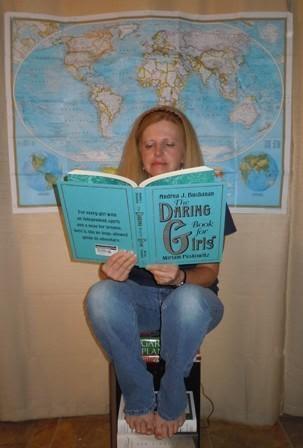Cheryl Hughes: Lost Temporarily
One morning while our granddaughter Sabria was staying with us, she said, “Teach me how to make pancakes, Gee.”
I took the pancake mix from the cabinet—the kind you have to add an egg, oil and milk to—and let her measure out the ingredients. “I use Crisco to fry them, because it browns the edges golden, but you can use cooking oil also. That’s what your mama uses.” (The present generation of young cooks doesn’t believe in Crisco, but when I think of a world without it, the words “pry, cold and dead fingers” come to mind.”)
I showed Sabria how to test the melted Crisco for the right frying temperature by dropping tiny bits of pancake mix onto the griddle. “If it sizzles, you’re ready to pour your batter,” I told her. She poured a bit much the first time, but I assured her that everybody does that when they’re first learning. I pointed out how bubbles in the sizzling batter and small holes where the bubbles pop signal that it is time to flip the pancake. I gave her an over-sized flat spatula, and she flipped the pancake like a pro. She was so pleased with herself.
When I told her mom that Sabria made pancakes for breakfast that morning, Natalie said, “I’m always afraid she’ll get burned.”
“She will,” I told her, “We all do, but we recover and we learn.”
Making pancakes is a simple little thing, but it’s part of my food history, like stripping tobacco is part of my farm history. There are things I never learned, however, like how to milk a cow or sugar cure a ham. If I reach a place in my life where I need to know those things, I sure hope there’s someone around who can teach me.
I listened to a story on NPR Sunday morning about the Houma Indians of Louisiana and how some parts of their culture was nearly lost because of the erosion of their coastal lands and the relocation of the tribe to lands that didn’t have the same resources. The Houma are known for their basket weaving, but more importantly for their Palmetto basket weaving.
The Palmetto is a low-growing tree with palm-like fronds. The outer fronds aren’t the material used in their weaving, however. The Houma use the fronds from the very heart of the tree, sometimes having to reach beneath the surface of the water to cut in the right place (NPR Sunday, July 21st). The fronds have to dry for weeks then some are cut into strips. Others are gathered into a bundle and tied together with the strips. The basket is woven with what is called a coiled half-hitch from the bottom up. (You can see a picture of one on noma.org. That’s the website for the New Orleans Museum of Art.)
When coastal erosion caused the Houma tribe to move away from their native soil, Palmetto basket weaving ceased to be part of the culture, simply because the Palmetto tree didn’t grow in the new location. According to 64Parrishes.org, knowledge of the coiled half-hitch method was lost to an entire generation. Janie Verret Luster, a cultural preservationist of the United Houma Nation, reintroduced the technique in the 1990’s. The story I heard on NPR this morning is a continuation of the preservation of that knowledge, but it is teenage Houma Indians who are being taught this craft.
Everything we do is built on something that somebody else did before us, whether it’s knowledge or craft or skill. We need to show each other how to do things and be allowed to watch each other do things. I’ve come across people who have taken recipes to the grave or people who have had a skill they never passed on. I hope I never hoard anything that will make someone else’s life better. Besides, I want Sabria to be able to make pancakes for me when I’m too old to do it for myself.



























